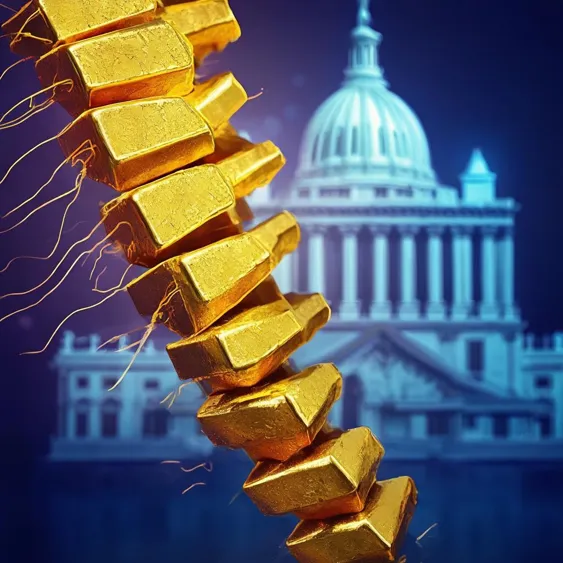Gold futures fall as White House clarifies bullion tariffs

The recent fluctuations in gold prices following the White House's announcement regarding tariffs on bullion reveal significant structural shifts in both the commodity market and international trade dynamics. Gold futures fell from an unprecedented closing high of $3,491.30 to $3,463.30 shortly after the clarification on tariffs was made public. The U.S. Customs and Border Protection has underscored that the imposing tariffs encompass not just Swiss imports but all 1-kilogram and 100-ounce gold bars. This is crucial as it signals a broader regulatory impact on a global scale, raising questions about the future of U.S. relations with key partners like Switzerland, which dominates gold refining globally.
The implications of these tariffs extend beyond mere price adjustments; they could potentially disrupt the entire gold supply chain. Christoph Wild from the Swiss Precious Metals Association voiced concerns over how these tariffs could "negatively impact the international flow of physical gold." Given that Switzerland is not only the largest gold refiner but also a significant player in the global gold market, the consequences may ripple through commodity prices and recalibrate investor expectations. Investors should note that the latest price movement reflects not just market reactions but the interplay of risks that come from protectionist policies, which can be juxtaposed against historical precedents like the 2008 financial crisis where commodities were also heavily affected by sudden policy shifts.
Looking through a historical lens, similar tariff impositions sparked tensions during the 1930s, resulting in broader economic ramifications. Today's dynamic, however, is markedly different thanks to advances in technology and market accessibility. Investors are now more interconnected, and gold has emerged as a hedge not only against inflation but also geopolitical instability. As such, while the immediate concern may seem rooted in tariff implications, it begs the question of whether this presents a genuine opportunity for bullish proponents of alternative markets, such as cryptocurrencies or other precious metals like silver, that may not face similar tariff barriers. With increasing volatilities, how these market segments respond could indicate a substantial opportunity for diversification for institutional investors.
Read These Next

China Unveils First Vertical Large Model for Tunneling Sector
China launches its first vertical large model to revolutionize tunnel construction, enhancing efficiency and safety with advanced tech.

Hainan's Fresh Vegetable Supply and Sales Outlook for Q4 Promising
Hainan's vegetable market is set for improvement in Q4, with abundant supply boosting farmer income and local economy.

Huali Group's Shift to Pharma: Opportunities and Challenges
Huali Group's strategic investment in the pharmaceutical sector reflects broader trends in healthcare investment, highlighting both opportunities and governance risks.
